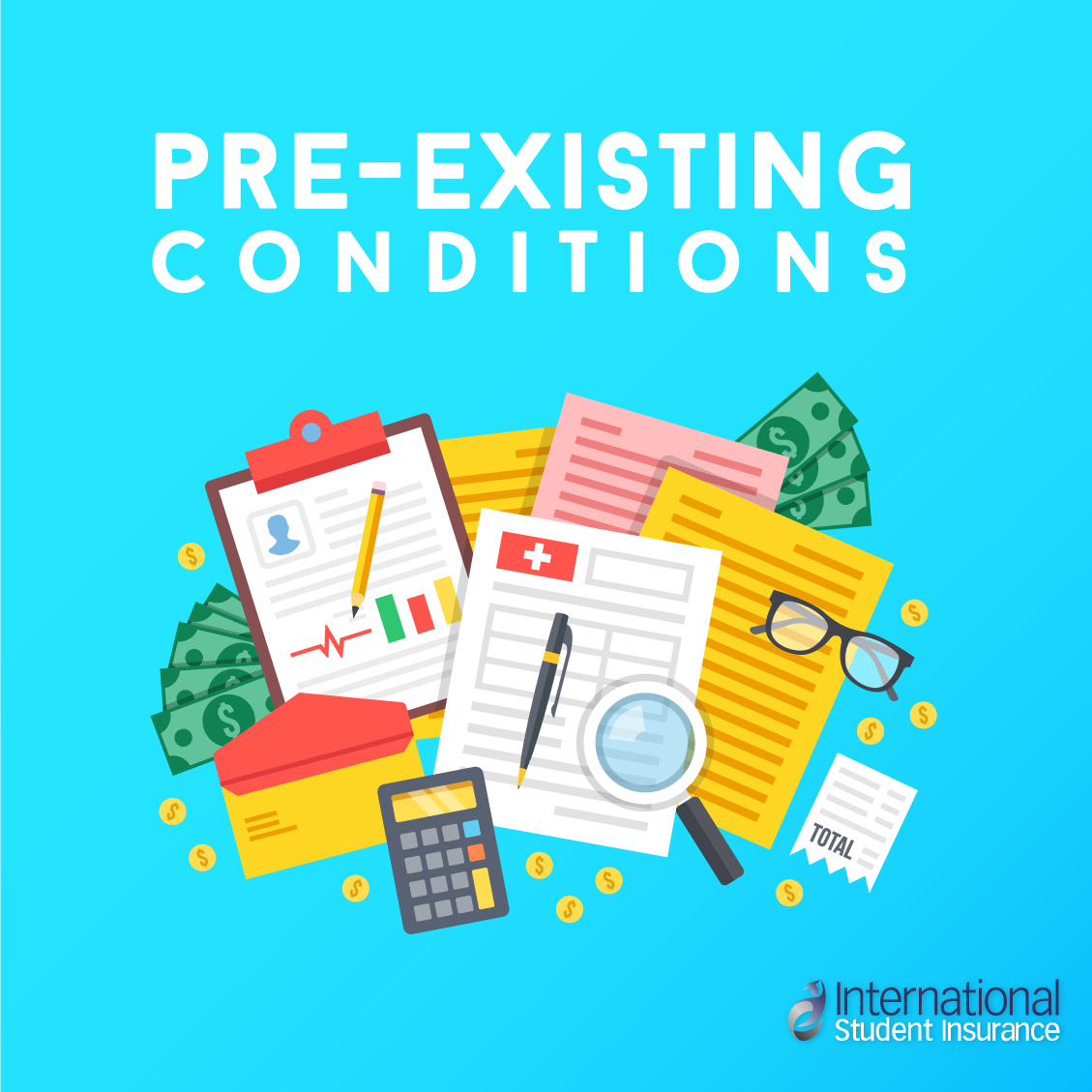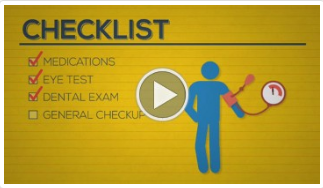If you are an international student or traveler, we recommend that you have a health insurance plan in case there is an accident or you suffer an illness and need to seek medical attention. When it comes to choosing an insurance plan, there are many important aspects that you should consider while you travel abroad. One of these is coverage for pre-existing conditions…. but what exactly are pre-existing conditions? How do insurance companies determine what a pre-existing condition is? What type of coverage do you need for pre-existing conditions? We will help you learn more about this type of coverage and what to look out for!
Pre-existing Conditions 101
Pre-existing conditions are any illnesses, injuries, or other physical, medical, mental, or nervous conditions, disorder or ailment that existed prior to the start date of your insurance plan.
Learn more about what is a pre-existing condition here
Any illness or injury will be carefully evaluated by your primary care physician or the emergency room doctor. Your doctor will run a series of tests and lab work and he or she will determine the most accurate date as to when your illness or injury began. All of these lab exams and data will help your doctor create your medical records.
 The insurance company will review your medical records to determine if your condition will be covered.
The insurance company will review your medical records to determine if your condition will be covered.Medical records are the systematic documentation of a patient’s medical history and care. Once your treatment concludes, you or your provider will file a claim by sending your medical records along with your medical bills to the insurance company. Then, the insurance company will have a professional claim examiner review the information and they will determine if your condition will be covered under the benefits of your plan.
For example, let’s say that your coverage began on Monday. By Wednesday of the same week, your back began hurting. Instinctively, you went to the hospital because the pain was very intense. After many tests, the ER doctor concludes that you have kidney stones. Usually, kidney stones take approximately 3-4 months to form. This means that it would be considered a pre-existing condition for your plan since your coverage started only 2 days ago. Even if you didn’t feel any pain before, the kidney stones have been forming for 3-4 months already.
International health insurance plans are designed to cover new illnesses and injuries for shorter periods of time. The coverage for pre-existing conditions varies from plan to plan. Some plans cover pre-existing conditions from the start of your coverage, other plans cover these conditions after a waiting period, and other will only cover an acute onset of a pre-existing condition. It’s important to be aware of the type of coverage you think best fits your needs.
-
Coverage for an acute onset of a pre-existing condition
Certain insurance plans will only cover an acute onset of a pre-existing condition. This means it will cover medical expenses for a sudden and unexpected outbreak or recurrence of a pre-existing condition. Generally, the unexpected outbreak must occur spontaneously and without advance warning, is of short duration, and requires you to obtain treatment within 24 hours of the sudden outbreak of your pre-existing condition.
An acute onset of a pre-existing condition cannot be covered if it’s a condition that you need to control with medicine or that is gradually becoming worse over time.
Our Atlas Travel plan offers this type of coverage as it will cover up to $25,000 USD of your medical expenses for an acute onset of a pre-existing condition.
-
Coverage for pre-existing conditions after a waiting period
Some insurance plans offer coverage for certain pre-existing conditions after a waiting period since they might be designed for people that will travel outside of their home country for more than a year. For example, our Student Secure plan offers coverage for a pre-existing condition after a 12 month waiting period on the Budget level and after a 6 month waiting period on the Select and Elite levels. The plan can also be renewed for up to 4 years total.
Additionally, our Student Health Advantage plan will also give you coverage for pre-existing conditions after a 12 month waiting period on the Standard level and 6 month waiting period on the Platinum level. This plan can be renewed up to 5 years total.
-
Coverage for pre-existing conditions from day 1
As we mentioned before, most travel and student insurance plans will only cover new illnesses and injuries. However, there are certain plans in the US that offer coverage for pre-existing conditions from the first day your coverage starts. Our Global Medical plan – Silver, Gold, and Platinum levels offers coverage for pre-existing conditions as soon as the policy starts as long as your application is approved. It’s a medically underwritten plan which means that there will be a series of medical questions and the application will be submitted for review to the insurance company.
Another option would be ACA compliant plans, which are required by law to include coverage for pre-existing conditions. International students are exempt, for up to 5 years, from needing to purchase an ACA compliant plan. However if your school does provide an ACA compliant plan, it will include coverage for pre-existing conditions, typically from day 1.
Because medical care is very expensive in the United States, before leaving your home country, we recommend:
- Get a general check up – if there is an illness or injury that has not been discovered or you haven’t presented symptoms, it could be found and treated before you leave your home country. This also includes an eye exam and a dental check up.
- Prescription medication – If you are currently being treated for a condition, it’s possible that your new insurance plan will not cover this medication as it’s for your pre-existing condition. Make sure to bring enough medicine with you while you fulfill any waiting periods for your plan.
- Medical records – Many people believe that the insurance company will not request medical records from their home country because they may be in another language or are not relevant to the current condition. This is incorrect; the insurance company will have access to your health records once you purchase a plan with them. In addition, they have official interpreters in different languages and have the ability to translate these records.
Hopefully, this overview of pre-existing conditions addressed most of your questions and explained how these conditions are determined. Always remember to check your coverage and make sure you choose the most appropriate plan for your needs.
We recommend watching our video on the US healthcare system which shows a general summary of how healthcare works here and will give you tips on how to prepare before traveling to the US.
Watch our US Healthcare System overview video here
Category: Insurance Explained, International Students in the USA, Student Insurance, Student Travel, Study Abroad
Tags: affordable international student insurance, coverage for pre-existing conditions in the US, coverage for pre-existing illness, coverage for pre-existing injury, Explanation of the US Healthcare System, File An Insurance Claim, health insurance explain, how can doctors know if my condition is pre-existing, how to know if a condition is pre-existing, pre-existing conditions, what is a pre-existing condition


informativ isa
Hello Alice,
Thanks for your comment, but we can only assist with your health insurance needs.
You may find InternationalStudent.com helpful as it offers an array of resources for international students including the following:
School Search Tool
Scholarships
Student Loans
Visa Information
Test Preparation
Essay Writing Help
We hope this helps and have a great day.